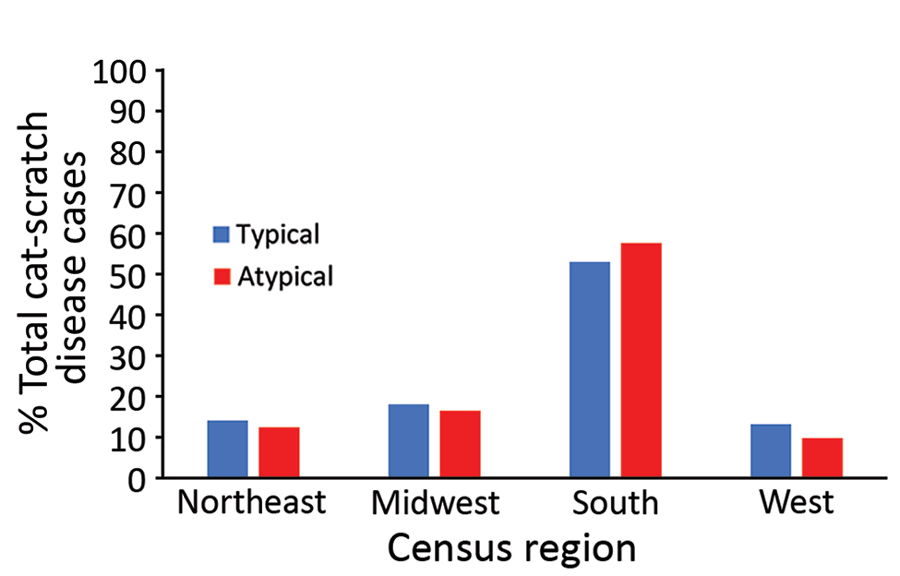Volume 26, Number 7—July 2020
CME ACTIVITY - Research
Atypical Manifestations of Cat-Scratch Disease, United States, 2005–2014
Figure 3

Figure 3. Proportions of typical and atypical cat-scratch disease by US Census region, United States, 2005–2014. Northeast: Connecticut, Maine, Massachusetts, New Hampshire, Rhode Island, Vermont, New Jersey, New York, Pennsylvania. Midwest: Illinois, Indiana, Iowa, Kansas, Michigan, Minnesota, Missouri, Nebraska, North Dakota, South Dakota, Ohio, Wisconsin. South: Arkansas, Delaware, Florida, Georgia, Louisiana, Maryland, North Carolina, Oklahoma, South Carolina, Texas, Virginia, West Virginia, Alabama, Hawaii, Kentucky, Mississippi, Oregon, Tennessee. West: Alaska, Arizona, California, Colorado, Idaho, Montana, Nevada, New Mexico, Utah, Washington, Wyoming, Puerto Rico, Virgin Islands.
1Current affiliation: University of North Carolina, Chapel Hill, North Carolina, USA.
2Current affiliation: Colorado Department of Public Health and Environment, Denver, Colorado, USA.